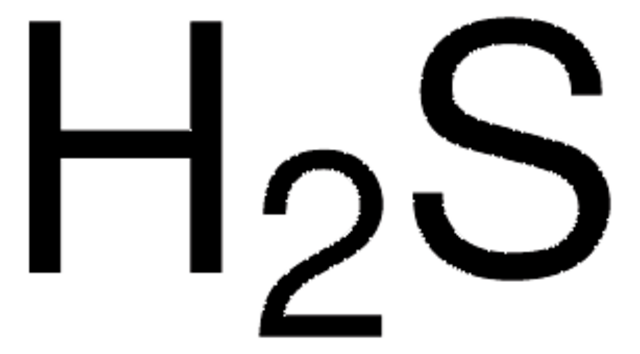295515
Methanethiol
98.0%
Synonym(s):
Mercaptan C1, Methyl mercaptan
About This Item
Recommended Products
vapor density
1.66 (vs air)
Quality Level
vapor pressure
1536 mmHg ( 20 °C)
Assay
98.0%
expl. lim.
21.8 %
bp
6 °C (lit.)
mp
−123 °C (lit.)
SMILES string
CS
InChI
1S/CH4S/c1-2/h2H,1H3
InChI key
LSDPWZHWYPCBBB-UHFFFAOYSA-N
Looking for similar products? Visit Product Comparison Guide
Application
Recommended products
control valve
Signal Word
Danger
Hazard Statements
Precautionary Statements
Hazard Classifications
Acute Tox. 3 Inhalation - Aquatic Acute 1 - Aquatic Chronic 1 - Flam. Gas 1A - Press. Gas Liquefied gas
Storage Class Code
2A - Gases
WGK
WGK 3
Flash Point(F)
-0.4 °F - closed cup
Flash Point(C)
-18 °C - closed cup
Personal Protective Equipment
Choose from one of the most recent versions:
Already Own This Product?
Find documentation for the products that you have recently purchased in the Document Library.
Customers Also Viewed
Protocols
Separation of Sulfur dioxide; Hydrogen sulfide; Carbonyl sulfide; Methanethiol; Ethanethiol; Dimethyl disulfide; Carbon disulfide
Our team of scientists has experience in all areas of research including Life Science, Material Science, Chemical Synthesis, Chromatography, Analytical and many others.
Contact Technical Service




